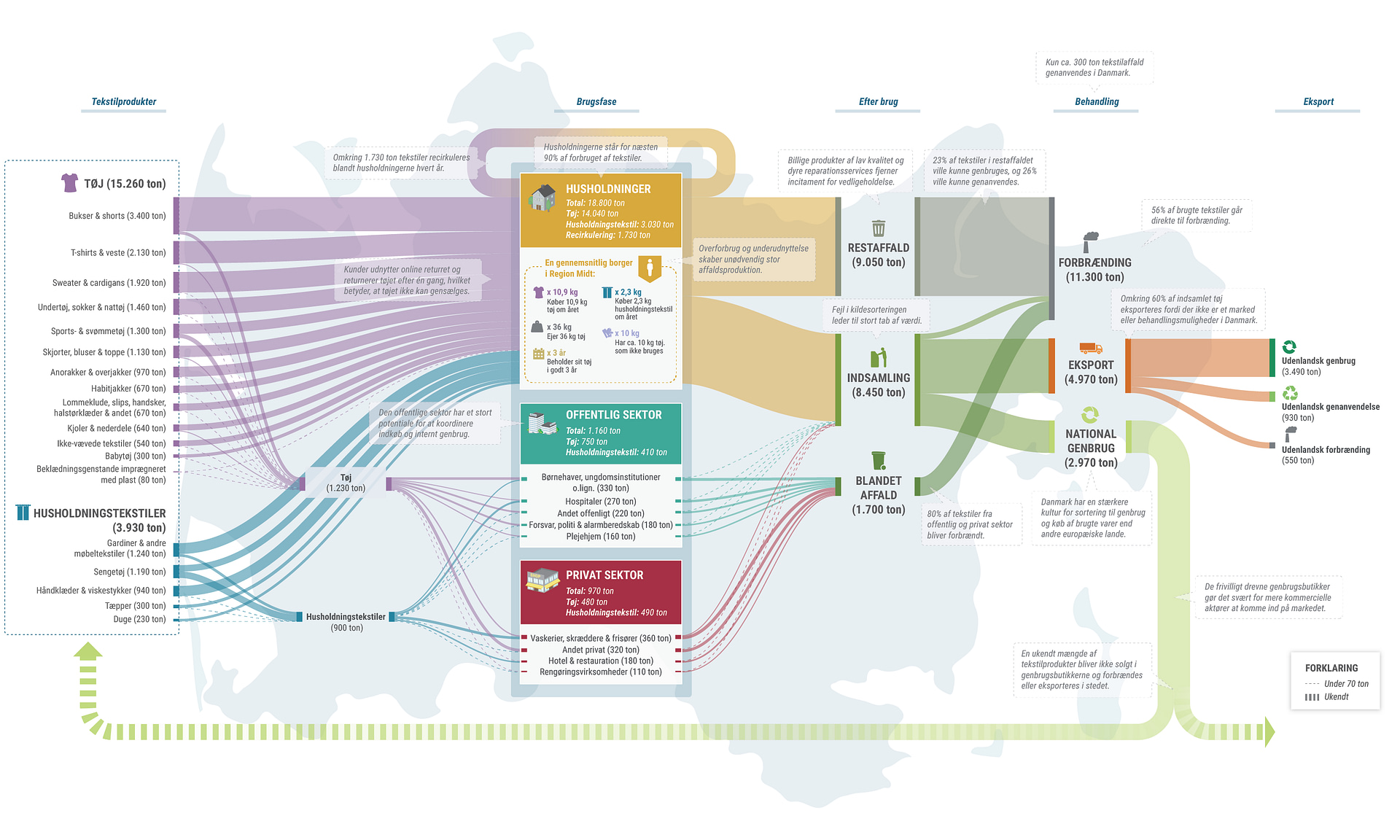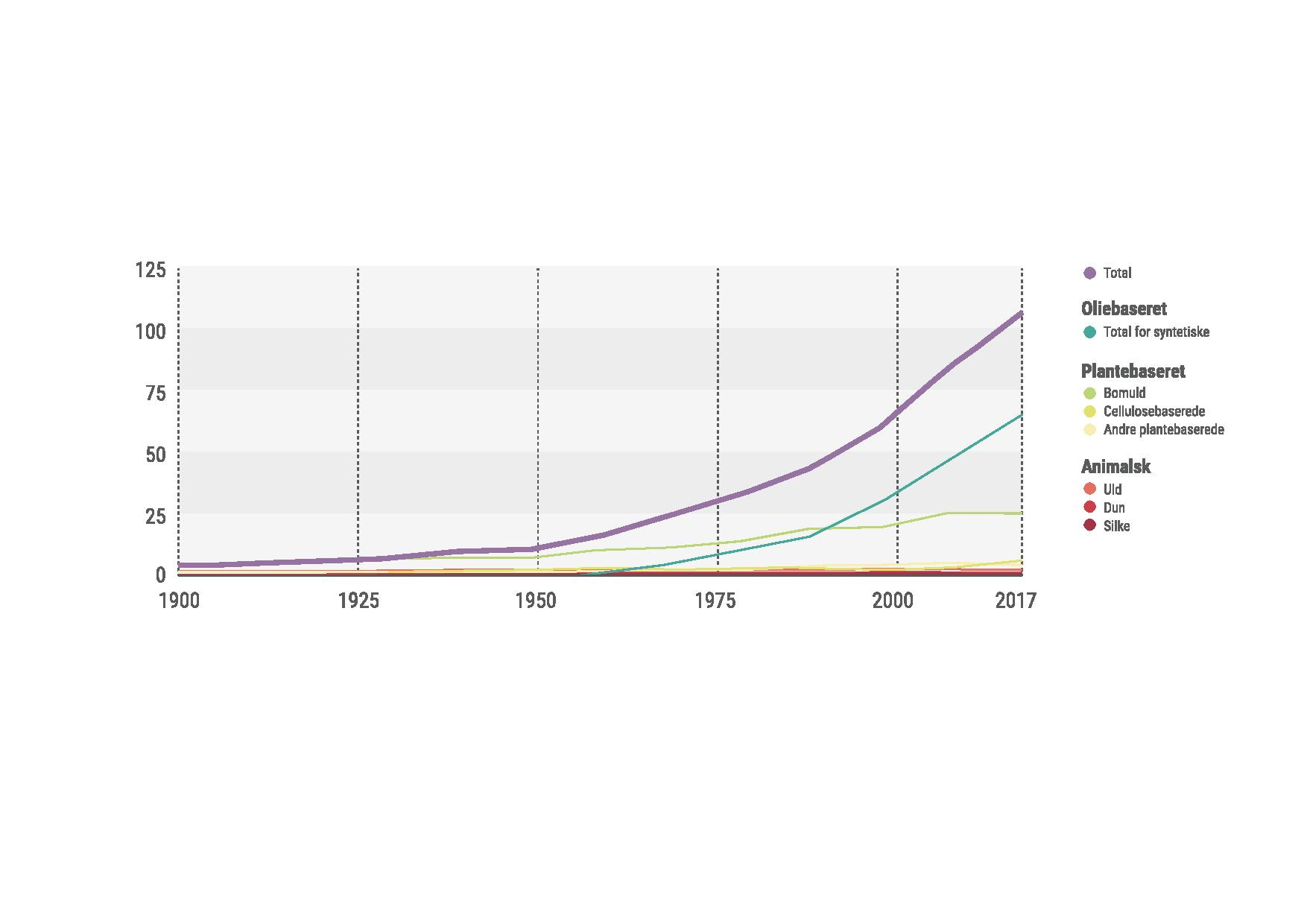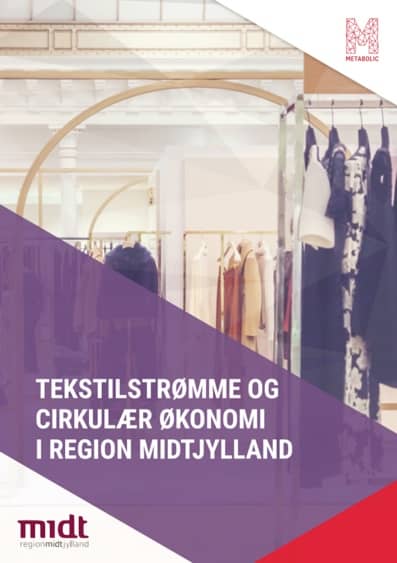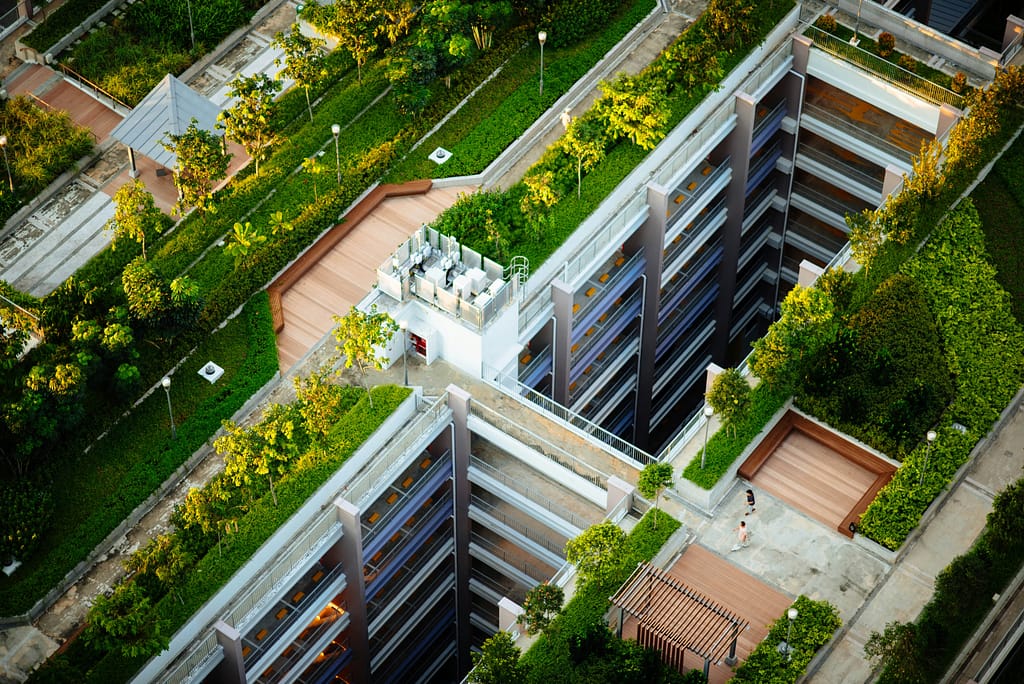Mapping the flow of textiles in the Central Region of Denmark
Identifying public solutions for a more circular textiles system.
The Central Region of Denmark commissioned Metabolic to examine how they can support and promote a more circular textile industry. Concrete action points were identified that can reduce over-consumption, increase the use-rate, minimize waste and reduce the consumption-based impacts of textiles in the Central Region of Denmark
- Client: Central Region of Denmark
- Date: September 2020
Large volumes and low recycling rates
The production of textiles has gone up threefold since 1975, but a lack of effective technologies keeps the recycling rate low. Less than 1% of textiles are remade into new clothes, 12% are downcycled, and 73% end up incinerated or landfilled. As part of the Central Region of Denmark’s transition to a circular economy, it is committed to finding concrete solutions that can minimize the use of new resources and create more value from residual flows and identified textiles as a potential intervention point.
Understanding the flow of textiles through the region
We undertook a material flow analysis of the textile streams in the region. 90 percent of textiles are consumed by households, with inhabitants buying on average more than 50 new pieces of clothing each year – significantly higher than C40’s recommendation of 3 new pieces of clothing per year to stay within the carbon budget. Most of the textiles consumed in the region, are produced outside of Denmark, and then after use they are mostly either incinerated or exported. This means that these items are only in the region during a relatively short functional life.
Extending the life of textiles
Based on the analysis, we identified three key action points, where the region can reduce the impact of regional textile consumption:
- Reduce household consumption through public campaigns and by supporting a stronger culture for repairing and maintaining textiles.
- Expand the already strong Danish market for secondhand clothes.
- Let the public sector lead the way by finding new ways of reusing and sharing textiles internally and with private actors.
In our recommendations we focus on areas where the region has direct influence , but recognise there are still fundamental problems within the industry. Therefore, we also encourage engaging in collaboration across regions and attempting to influence policy at all governance levels.








”Our textile consumption is a climate challenge that we must solve together. This is not achieved merely with an additional trashcan for discarded clothes. We need good research and analysis that we can ultimately find and implement the most effective solutions for society.”
Jørgen Nørby, chairman of the Committee for Regional Development, Central Region of Denmark
Director of Sustainable Cities & Regions
ANY QUESTIONS?
For more information about this project, please get in touch.






